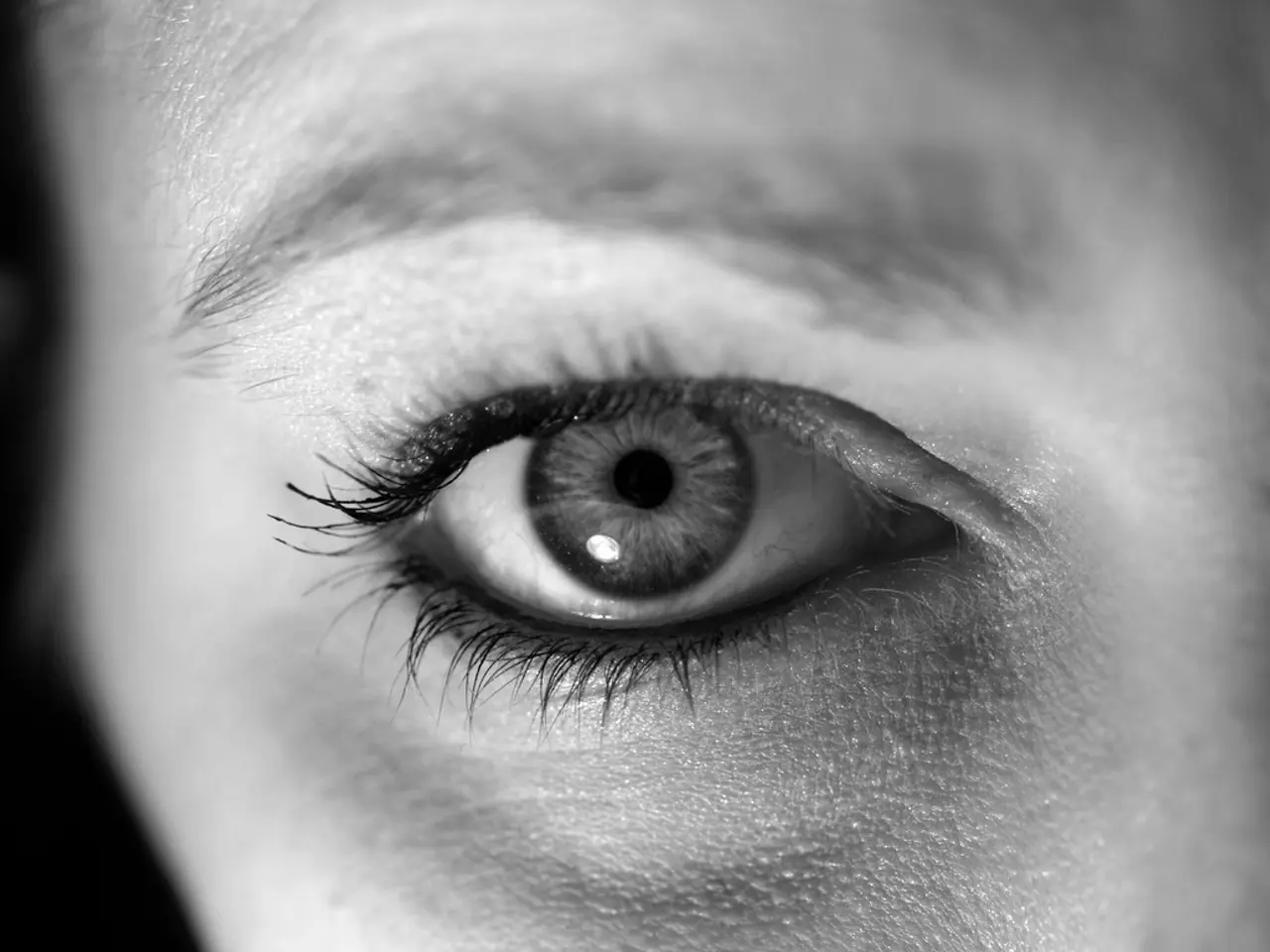Eye strain headaches: Origins, alleviation methods, and relief options
Headaches behind the eyes can be a common and bothersome issue, with various underlying causes. Understanding these causes and their corresponding treatments can help alleviate discomfort and prevent recurrence.
One common cause of headaches behind the eyes is eye strain, also known as asthenopia. Prolonged screen use, reading in dim light, or excessive close work can lead to this condition, causing symptoms such as headache, burning or tired eyes, difficulty focusing, and sometimes blurry vision. Regular breaks from screens, proper lighting, use of artificial tears, and corrective lenses if necessary can help manage eye strain.
Migraines are another potential cause of headaches behind the eyes. Triggers for migraines can include stress, certain foods, or hormonal changes. Migraines often present as pulsating pain behind one or both eyes, often accompanied by light sensitivity, nausea, and sometimes visual disturbances (aura). Treatment for migraines may involve rest in a quiet, darkened room, pain relievers, preventive medications if migraines are frequent, and lifestyle modifications such as avoiding known triggers.
Sinusitis, or sinus infection, can also cause headaches behind the eyes. Sinusitis is inflammation or infection of the sinuses, which can cause pressure and pain behind the eyes. Sinusitis is often the result of allergies or a virus trapped in the sinuses due to congestion, but can also have bacterial or fungal causes. Decongestants, saline nasal sprays, pain relievers, and sometimes antibiotics if a bacterial infection is present can help manage sinusitis.
Refractive errors, such as uncorrected vision problems like myopia, hyperopia, or astigmatism, can also lead to headaches behind the eyes. Corrective lenses can help alleviate this type of headache.
Dry eyes, often due to screen use or dry environments, can cause irritation, burning, and headache behind the eyes. Artificial tears, humidifiers, and reducing screen time can help manage dry eyes.
Optic neuritis, inflammation of the optic nerve, can also cause headaches behind the eyes. This condition requires prompt medical evaluation, often with corticosteroids to reduce inflammation.
Cluster headaches, characterized by one to eight short, painful headaches over a day, with the headaches occurring on one side of the head and potentially behind one eye, are another potential cause of headaches behind the eyes. The exact cause of cluster headaches is unknown, but they often show circadian patterns. Treatment for cluster headaches may involve oxygen therapy, triptans, and preventive medications; seek specialist care for frequent or severe episodes.
If headaches behind the eyes are persistent, severe, or accompanied by vision changes or neurological symptoms, medical evaluation is recommended to rule out serious causes. In severe cases, a person may experience symptoms of a tension headache for several days. Tension headaches develop for a variety of reasons, including lack of sleep, stress, staring at a screen for a long time, driving long distances, and muscle contractions in the neck or head.
In conclusion, understanding the various causes of headaches behind the eyes and their corresponding treatments can help manage discomfort and prevent recurrence. If headaches persist or are severe, it is essential to seek medical advice to rule out serious causes.
- Atopic dermatitis, a type of eczema, can occasionally lead to eye irritation and subsequent headaches.
- In the realm of health-and-wellness, understanding the predictive factors of migraines can aid in managing their occurrence.
- Migraines, a neurological disorder, can cause sinusitis-like symptoms, including headaches behind the eyes.
- In some cases, diabetes might be associated with increased fatigue and tension, leading to headaches behind the eyes.
- A particular type of asthma can exhibit symptoms similar to sinusitis, such as headaches behind the eyes and eye discomfort.
- Science has linked the connection between screen use and dry eyes, leading to headaches and eye strain.
- Mental health conditions, like stress or anxiety, can exacerbate headaches behind the eyes due to tension in the head and neck muscles.
- Regular eye check-ups can help identify any underlying medical-conditions, such as refractive errors, that might be causing headaches behind the eyes.
- Optometrists can provide treatments for eye conditions, like dry eyes or refractive errors, to prevent the development of headaches.
- AQ (Asthenopia Quotient) tests are a helpful tool in assessing eye strain, which is a commonly reported cause of headaches behind the eyes.




